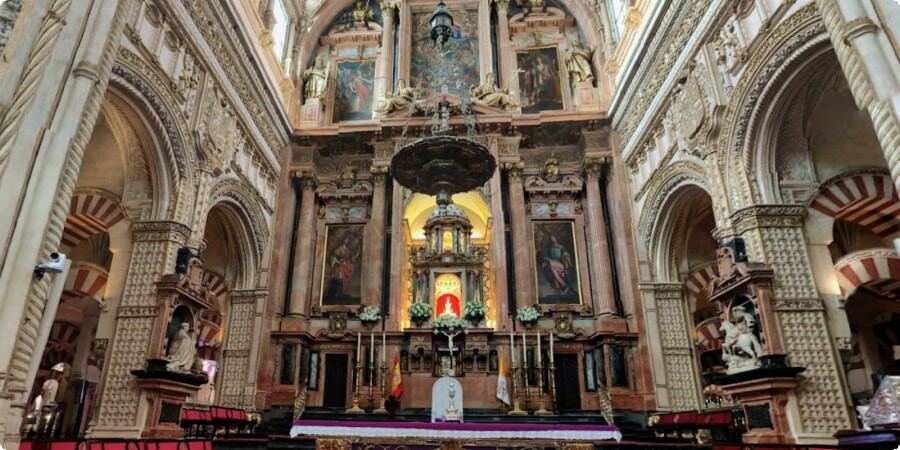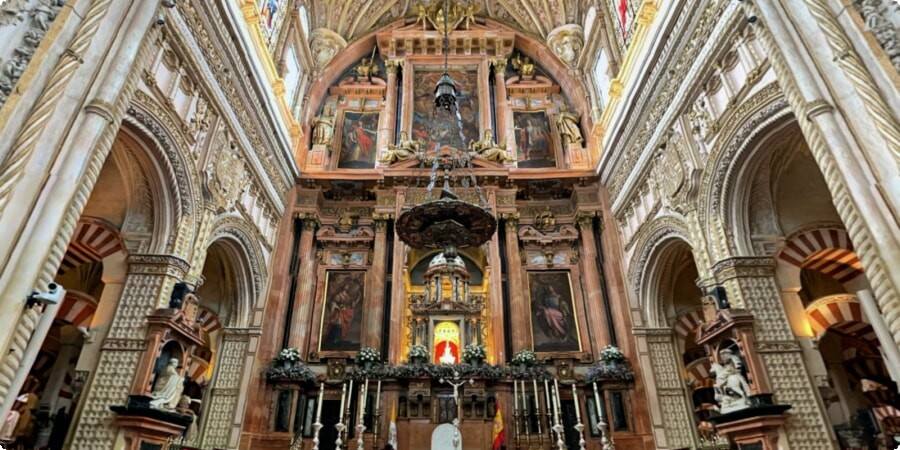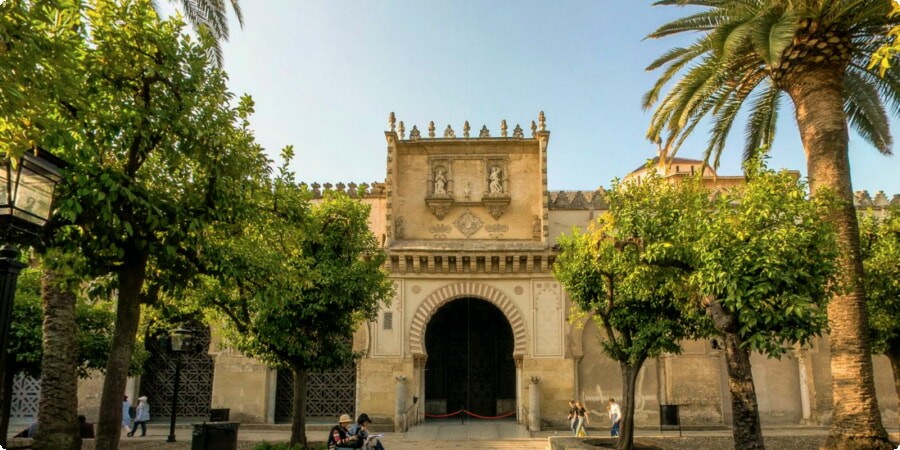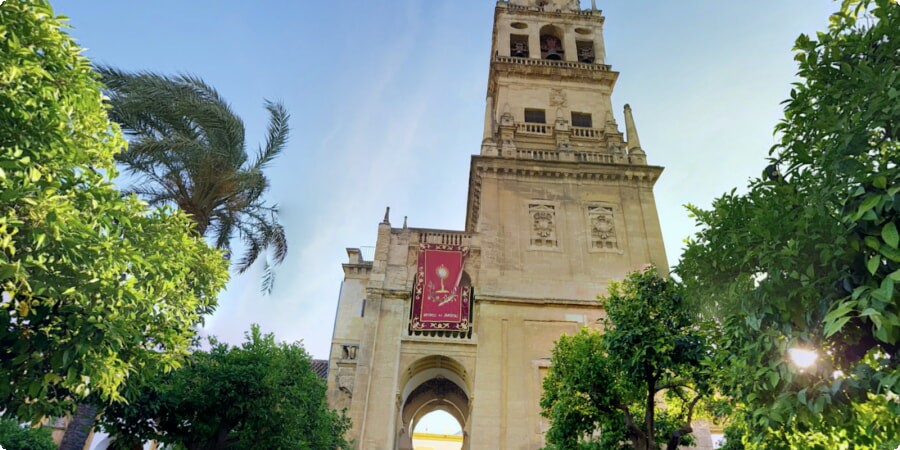Nestled in the heart of Córdoba, the Mosque-Cathedral, also known as La Mezquita, stands as a timeless testament to Spain's rich cultural heritage. This architectural marvel beautifully weaves together centuries of history, offering a glimpse into the region’s Islamic, Christian, and Jewish pasts.
As one of the most important monuments in all of Andalusia, it attracts visitors from around the world, drawn not only by its breathtaking architecture but also by the story it tells—a story of religious transformation, artistic evolution, and cultural coexistence. Whether you're a history buff, an architecture enthusiast, or simply a curious traveler, a visit to this iconic site promises to be an unforgettable experience.
A Brief History: From Mosque to Cathedral
The Mosque-Cathedral of Córdoba is not only a symbol of artistic ingenuity but also a reflection of the complex religious and cultural dynamics of medieval Spain. Built in the 8th century during the Islamic rule of Al-Andalus, it originally served as a grand mosque for Muslim worshippers. Its construction was commissioned by Abd al-Rahman I, the first Emir of Córdoba, and over the next two centuries, the mosque underwent several expansions, becoming one of the largest and most important mosques in the Islamic world.
However, the story doesn’t end there. In 1236, following the Reconquista, Córdoba was recaptured by Christian forces, and the mosque was consecrated as a Catholic cathedral. In the 16th century, a Renaissance-style nave was added to the heart of the building, transforming the structure into a striking fusion of Islamic and Christian art. Today, the Mosque-Cathedral is not only a place of worship but a symbol of the region’s layered history, where both faiths left their indelible mark.
For a deeper understanding of its historical significance, you can explore more about the Reconquista and the Umayyad Caliphate here.

Architectural Wonders: What to Look For
Walking into the Mosque-Cathedral feels like stepping into a different world. One of the most striking features is the forest of columns and arches that seem to extend endlessly in every direction. These columns, numbering over 800, are connected by red-and-white striped horseshoe arches, a hallmark of Moorish architecture. Each step deeper into the building reveals new layers of artistry and craftsmanship, with subtle shifts in design reflecting the changes over centuries.
At the center of the structure is the stunning Mihrab, the prayer niche that once indicated the direction of Mecca. This golden, intricately decorated area is a masterpiece of Islamic art and should not be missed. Equally captivating is the Renaissance nave, added later by the Christian rulers. The contrast between the Islamic architecture and the soaring Gothic-Renaissance structure is nothing short of breathtaking, symbolizing the complex history of the building.
As you wander, don’t forget to look up! The ceiling of the nave features impressive wooden craftsmanship, while the dome above the Mihrab showcases intricate geometric patterns. Each corner of this magnificent space offers a new visual treat.
To explore these architectural wonders with ease and comfort, booking a car from Barcelona can be a great option to ensure a seamless trip. You can do so here.
Make sure to also check out the Patio de los Naranjos (Courtyard of the Orange Trees), a peaceful outdoor space that dates back to the original mosque. The surrounding garden offers a beautiful setting to relax and reflect after your visit. For directions to the mosque from the city center, you can check Google Maps here.

Best Time to Visit: Seasons and Timing Tips
The Mosque-Cathedral of Córdoba is a year-round destination, but there are certain times when your visit can be even more enjoyable. The best time to explore this architectural wonder is during the spring and autumn months (March to May and September to November), when the weather is mild and the city isn’t overwhelmed by the scorching heat of summer. Spring is particularly delightful, as the nearby Patio Festival (Festival de los Patios) brings the courtyards of Córdoba to life with colorful flowers and decorations, adding to the charm of your visit.
If you prefer fewer crowds, it’s a good idea to visit early in the morning or late in the afternoon. The Mosque-Cathedral opens around 10:00 AM, but arriving slightly earlier lets you experience the peaceful ambiance of the Patio de los Naranjos without the rush of tourists. Alternatively, evenings offer a unique opportunity to experience the night tours, where the monument is beautifully illuminated, creating a magical atmosphere that highlights its architectural splendor.
For religious reasons, be mindful that Sundays and Catholic holidays may affect opening hours, as Mass is often held in the cathedral. It’s a good idea to check in advance and plan accordingly to avoid any scheduling conflicts.
Ticketing, Hours, and Guided Tours: Practical Information
Planning your visit to the Mosque-Cathedral of Córdoba is simple, but knowing the practical details can make your experience smoother. The monument is open daily, with regular hours from 10:00 AM to 7:00 PM. However, during high tourist seasons, the hours may extend to allow for more visitors, especially on weekends.
Tickets and Pricing
Tickets can be purchased directly at the entrance, but for a hassle-free experience, it’s highly recommended to book your tickets online in advance. Standard tickets are usually priced at around €11 for adults, with discounted rates for students, children, and seniors. There are also night-time visits and combined tours available, which include the bell tower or other nearby attractions.
Guided Tours
For those seeking a deeper understanding of the history and architecture, a guided tour is the way to go. Local guides provide fascinating insights into the evolution of the building, offering stories you wouldn’t discover on your own. There are audio guides available in multiple languages, as well, for a self-paced exploration.
You can book guided tours through the official website of the mosque or through local tour operators in Córdoba. Make sure to allocate at least 1.5 to 2 hours for your visit, especially if you’re planning to explore the Bell Tower (Torre del Alminar), which offers spectacular panoramic views of Córdoba’s historic center.
For travelers who want to fully explore the region with ease, renting a car in Spain is a fantastic option. To ensure convenience, book a car in advance through this link.

What Not to Miss: Hidden Gems of the Mosque-Cathedral
While the Mosque-Cathedral’s main attractions, like the Mihrab and the forest of arches, are awe-inspiring, there are several hidden gems within the monument that often go unnoticed by visitors. These lesser-known features offer a more intimate experience of the site’s rich history and artistry.
The Bell Tower (Torre del Alminar)
Once the minaret of the original mosque, the Bell Tower now serves as a symbol of the Christian conversion of the building. Climbing the tower provides an exceptional view of Córdoba’s old town, including the Roman Bridge and the surrounding Guadalquivir River. The climb is not overly strenuous, and the reward at the top is well worth the effort. Don’t forget to take a few moments to admire the intricate design of the tower itself, which blends Moorish and Baroque elements.
Patio de los Naranjos
Though easily accessible, the Patio de los Naranjos is often overlooked in the rush to enter the main structure. This peaceful courtyard, with its iconic orange trees and Islamic-style fountains, offers a serene spot to relax and reflect on the beauty of the mosque. It’s also an ideal location for photography, especially during golden hour when the sunlight streams through the trees and creates beautiful shadows.
Chapel of Villaviciosa
Tucked away in the interior of the Mosque-Cathedral, the Chapel of Villaviciosa is a stunning example of early Christian alterations to the mosque. Its Gothic arches and delicate decorations stand in contrast to the surrounding Islamic architecture, offering yet another glimpse into the complex history of this monument.
These hidden corners of the Mosque-Cathedral provide a more intimate connection to its multifaceted past, giving visitors the opportunity to experience the monument beyond the crowds and famous landmarks. Be sure to set aside time to wander and explore these lesser-known gems.

Exploring the Surrounding Area: Córdoba’s Historic Quarter
Once you've soaked in the beauty of the Mosque-Cathedral, take the time to explore the historic quarter of Córdoba, known as the Judería. This vibrant neighborhood, a maze of narrow cobblestone streets, whitewashed houses, and beautiful squares, offers a window into the city’s multicultural past. The Judería was once the heart of Córdoba's Jewish community during the Islamic era, and traces of this rich heritage can still be found today.
Must-See Attractions in the Area
- The Roman Bridge: Located just steps from the Mosque-Cathedral, this ancient bridge spans the Guadalquivir River and offers incredible views of the city. It’s an ideal spot for a leisurely walk, especially at sunset, when the skyline of Córdoba is bathed in golden light.
- The Alcázar of the Christian Monarchs: A short walk from the mosque, this medieval fortress boasts stunning gardens, reflecting pools, and towers with panoramic views of the city. It was once the residence of Catholic monarchs Ferdinand and Isabella and served as the location where they met Christopher Columbus before his famous voyage to the Americas.
- The Synagogue of Córdoba: One of the few surviving medieval synagogues in Spain, this small but beautiful building is a testament to the city’s once-thriving Jewish community. Its intricately carved walls and peaceful atmosphere make it a must-visit for those interested in Córdoba’s diverse history.
These nearby attractions make the historic quarter the perfect place to wander after visiting the Mosque-Cathedral, offering even more layers of Córdoba’s captivating past.
Cultural Etiquette: Respectful Behavior and Dress Code
As the Mosque-Cathedral is an active place of worship, it’s important to observe certain cultural etiquette during your visit to ensure that you respect the sacred nature of the site. Although it functions primarily as a tourist destination, it remains a working cathedral where Mass is held regularly.
Dress Code
Visitors are expected to dress modestly, with shoulders and knees covered. While there’s no strict enforcement at the entrance, it’s a sign of respect to adhere to these guidelines, especially when entering the cathedral’s religious spaces. If you happen to arrive in summer clothing, carrying a light shawl or scarf is a good option to cover up if needed.
Behavior Inside the Mosque-Cathedral
Given its dual history as both a mosque and a cathedral, it’s important to remain quiet and respectful, particularly during times of prayer or religious services. Photography is allowed, but flash photography and tripods are discouraged to preserve the integrity of the building and maintain a peaceful atmosphere. If you’re visiting during Mass, which is held in the main chapel, it’s courteous to observe from a distance and avoid walking through the central aisle while the service is in progress.
By being mindful of the cultural and religious significance of the site, you can ensure a respectful and enriching experience.
Additional Tips for a Smooth Visit
To make the most of your visit to the Mosque-Cathedral of Córdoba, here are a few additional tips to keep in mind:
Booking Tickets and Avoiding the Crowd
While walk-in tickets are available, booking your tickets online in advance is highly recommended, especially during the busy summer months and weekends. This will help you skip the long lines and ensure that you have plenty of time to explore the monument at your own pace. Early morning and late afternoon visits are ideal for avoiding the midday rush of tourists.
Accessibility
The Mosque-Cathedral is mostly wheelchair accessible, with ramps provided at several entrances and throughout the main areas of the monument. However, certain parts of the complex, like the Bell Tower, may not be easily accessible to visitors with mobility issues due to the narrow staircases.
Parking and Transportation
If you're planning to explore Córdoba and other cities in Andalusia, renting a car can be incredibly convenient. Parking near the Mosque-Cathedral can be tricky, especially in the historic quarter, so it’s best to park a bit further out and walk through the scenic streets. For those traveling from nearby cities like Seville or Granada, renting a car in Spain ensures smooth travel across Andalusia’s picturesque landscapes. You can book a car easily through this link.
By following these simple tips, you’ll be able to fully enjoy the beauty, history, and cultural richness of one of Spain’s most iconic monuments.
